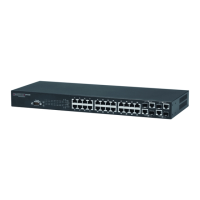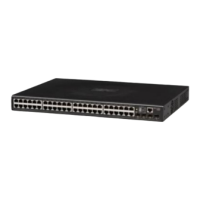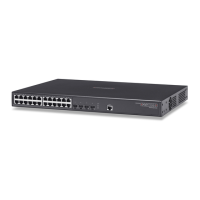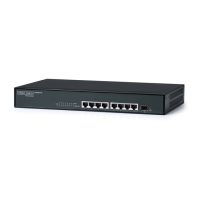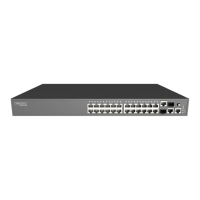C
HAPTER
16
| IP Configuration
Setting the Switch’s IP Address (IP Version 6)
– 418 –
◆ Enable IPv6 Explicitly – Enables IPv6 on an interface. Note that
when an explicit address is assigned to an interface, IPv6 is
automatically enabled, and cannot be disabled until all assigned
addresses have been removed. (Default: Disabled)
Disabling this parameter does not disable IPv6 for an interface that has
been explicitly configured with an IPv6 address.
◆ MTU – Sets the size of the maximum transmission unit (MTU) for IPv6
packets sent on an interface. (Range: 1280-65535 bytes;
Default: 1500 bytes)
■
IPv6 routers do not fragment IPv6 packets forwarded from other
routers. However, traffic originating from an end-station connected
to an IPv6 router may be fragmented.
■
All devices on the same physical medium must use the same MTU in
order to operate correctly.
■
IPv6 must be enabled on an interface before the MTU can be set. If
an IPv6 address has not been assigned to the switch, “N/A” is
displayed in the MTU field.
◆ ND DAD Attempts – The number of consecutive neighbor solicitation
messages sent on an interface during duplicate address detection.
(Range: 0-600, Default: 1)
■
Configuring a value of 0 disables duplicate address detection.
■
Duplicate address detection determines if a new unicast IPv6
address already exists on the network before it is assigned to an
interface.
■
Duplicate address detection is stopped on any interface that has
been suspended (see "Configuring VLAN Groups" on page 158).
While an interface is suspended, all unicast IPv6 addresses assigned
to that interface are placed in a “pending” state. Duplicate address
detection is automatically restarted when the interface is
administratively re-activated.
■
An interface that is re-activated restarts duplicate address detection
for all unicast IPv6 addresses on the interface. While duplicate
address detection is performed on the interface’s link-local address,
the other IPv6 addresses remain in a “tentative” state. If no
duplicate link-local address is found, duplicate address detection is
started for the remaining IPv6 addresses.
■
If a duplicate address is detected, it is set to “duplicate” state, and a
warning message is sent to the console. If a duplicate link-local
address is detected, IPv6 processes are disabled on the interface. If
a duplicate global unicast address is detected, it is not used. All
configuration commands associated with a duplicate address remain
configured while the address is in “duplicate” state.
■
If the link-local address for an interface is changed, duplicate
address detection is performed on the new link-local address, but
not for any of the IPv6 global unicast addresses already associated
with the interface.

